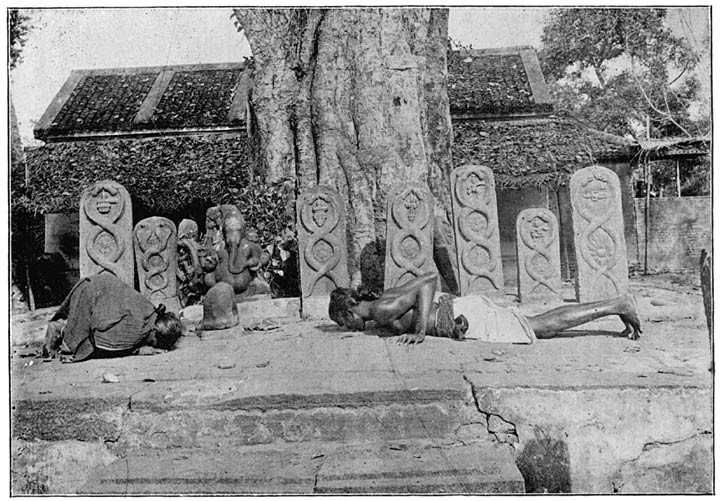|
Nattar
The institution of the ''nattar'' was well-defined. It was in charge of all matters pertaining to a village, including water-management. It was noted that: "If ruling class is taken to mean those with the power and authority to manage community resources, then the ''nattar'' was this class in Tamil country". Description Ceremonial establishments of brahmin villages in the ''nadus'' to pursue dharmic ends were important in effecting links beyond the nadu. The ''brahmadeyas'' of different nadus created a network of ritual specialists and in doing so fortified the standing of the nattar upon whose patronage this depended. Nattar as a political body was recognized by the Pallavas and Pandyas. The Pallava and Pandya copper plates regarding grants of land had nattars mentioned in them. See also *Ancient Tamil country * Parvatha rajakulam *Velirs The Velir (also known as Vellalar) were a royal house of minor dynastic kings and aristocratic chieftains in Tamilakam in the ea ... [...More Info...] [...Related Items...] OR: [Wikipedia] [Google] [Baidu] |
Parvatha Rajakulam
Sembadavar or Parvatha Rajakulam is a traditional fisherman community found mainly on the Coromandel coast of the Indian states of Tamil Nadu and Pondicherry. They also take the title Nattar. Sembadavar are a maritime community who are occupied primarily as inland and river fishermen and primarily fish with fishing net. A similar caste also known as ''Sambuni Reddi'' is found in Andhra Pradesh and Telangana. There are many theories as to their origins but they have since ancient times been recorded in the area of Tamil Nadu, Pondicherry and Sri Lanka. Etymology The name Sembadavar is mythologically connected to the principal Hindu god Shiva. The name is derived from the Tamil words ''Sambu,'' a name of Shiva and ''Padavar'' meaning boatmen thus literally meaning "Shiva's boatmen". The name might also be derived from ''Sem'' meaning good and ''Padavar'' thus literally meaning "good boatmen". History Mythological origin According to one legend was Shiva fond of one of their c ... [...More Info...] [...Related Items...] OR: [Wikipedia] [Google] [Baidu] |
Vellalar
Vellalar is a generic Tamil term used primarily to refer to various castes who traditionally pursued agriculture as a profession in the Indian states of Tamil Nadu, Kerala and northeastern parts of Sri Lanka. The Vellalar are members of several endogamous castes such as the numerically strong Arunattu Vellalar, Chozhia Vellalar, Karkarthar, Karkarthar Vellalar, Kongu Vellalar, Thuluva Vellalar and Sri Lankan Vellalar. Etymology The earliest occurrence of the term ''Velaalar'' (வேளாளர்) in Sangam literature is in Paripatal, Paripadal where it is used in the sense of a landowner. The term Velaalar (வேளாளர்) can be derived from the word Vel (வேள்), Vel being a title that was borne by the Velir chieftains of Sangam age among other things. The word ''Vellalar'' (வெள்ளாளர் ) may come from the root ''Vellam'' for flood, which gave rise to various rights of land; and it is because of the acquisition of land rights that the Vellalar g ... [...More Info...] [...Related Items...] OR: [Wikipedia] [Google] [Baidu] |
Pallava
The Pallava dynasty existed from 275 CE to 897 CE, ruling a significant portion of the Deccan, also known as Tondaimandalam. The dynasty rose to prominence after the downfall of the Satavahana dynasty, with whom they had formerly served as feudatories. The Pallavas became a major South Indian power during the reign of Mahendravarman I (600–630 CE) and Narasimhavarman I (630–668 CE), and dominated the southern Andhra Region and the northern parts of the Tamil region for about 600 years, until the end of the 9th century. Throughout their reign, they remained in constant conflict with both the Chalukyas of Badami in the north, and the Tamil kingdoms of Chola and Pandyas in the south. The Pallavas were finally defeated by the Chola ruler Aditya I in the 9th century CE. The Pallavas are most noted for their patronage of Hindu temple architecture, the finest example being the Shore Temple, a UNESCO World Heritage Site in Mamallapuram. Kancheepuram served as the capital of ... [...More Info...] [...Related Items...] OR: [Wikipedia] [Google] [Baidu] |
Ancient Tamil Country
Tamiḻakam (Tamil: தமிழகம்; Malayalam: തമിഴകം), refers to the geographical region inhabited by the ancient Tamil people, covering the southernmost region of the Indian subcontinent. Tamilakam covered today's Tamil Nadu, Kerala, Puducherry, Lakshadweep and southern parts of Andhra Pradesh and Karnataka. Traditional accounts and the ''Tolkāppiyam'' referred to these territories as a single cultural area, where Tamil was the natural language and permeated the culture of all its inhabitants. The ancient Tamil country was divided into kingdoms. The best known among them were the Cheras, Cholas, Pandyans and Pallavas. During the Sangam period, Tamil culture began to spread outside Tamilakam. Ancient Tamil settlements were also established in Sri Lanka (Sri Lankan Tamils) and the Maldives ( Giravarus). In contemporary India, Tamil politicians and orators often use the name ''Tamilakam'' to refer to Tamil Nadu alone. Etymology "Tamiḻakam" is a por ... [...More Info...] [...Related Items...] OR: [Wikipedia] [Google] [Baidu] |
Velirs
The Velir (also known as Vellalar) were a royal house of minor dynastic kings and aristocratic chieftains in Tamilakam in the early historic period of South India. They had close relations with Chera, Chola and Pandya rulers through ruling and coronation rights. Sangam literature and inscriptions claim that they belong to the Kshatriya dynasty of Yadu (legendary king). Origin According to the '' Tholkappiyam'', the earliest work of Tamil literature, eighteen clans of the Velirs came from the city of '' Tuvarapati'' under the leadership of the sage Agastya.Pivot politics: changing cultural identities in early state formation processes By M. van Bakel page 165: "The Velir were an instrusive group in South India... It is now suggested that (...) may have been associated with the Yadava of Dvaraka../ref> The legend goes that all the gods and sages went to the Himalayas to attend the marriage of Shiva, Siva with Parvati due to which the earth started tilting to one side. Aga ... [...More Info...] [...Related Items...] OR: [Wikipedia] [Google] [Baidu] |



